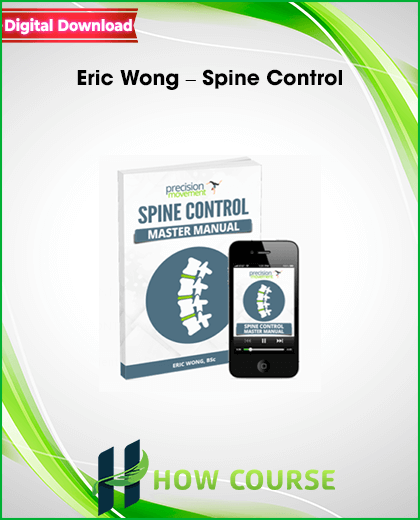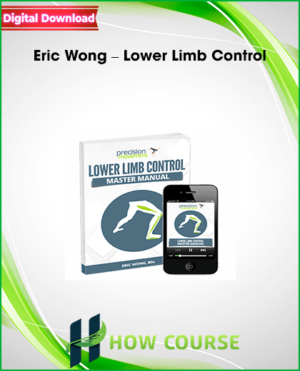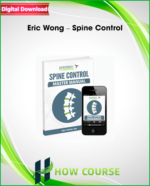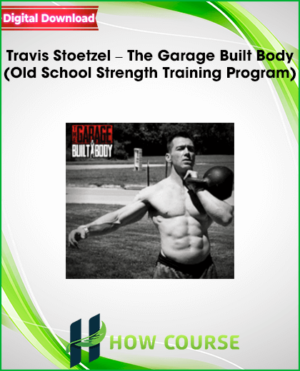Eric Wong – Spine Control
A Kinesiology-Based Approach to a Spine That’s Resilient and Resistant to Injury
Kinesiology is defined as the study of human movement. It includes the sub-disciplines of anatomy, biomechanics and physiology and it’s these 3 sub-disciplines that provide the scientific basis for the Spine Control program.
And when I say “for LIFE”, I mean it in two ways: the chronological sense as in “for the rest of your life” and the broader sense that includes “everything you do in your life” that include things like:
Sports: golf, CrossFit, MMA, hockey, tennis, soccer, running, etc
Activities of Daily Living: gardening, bending over to tie your shoes, retrieving your baby from her crib, sitting, standing, walking, etc
Recreation: hiking, canoeing, camping without having to bring your orthopaedic mattress, etc
And not just doing these things, but doing them pain-free AND without the fear you’re going to injure yourself.
There are 2 steps you must work through to developing a spine that’s strong, stable and mobile and that’s resilient and resistant to injury: the development of neutral spine core stability and allowing any damaged tissues to heal, then progressing to dynamic control, which will restore mobility while strengthening the neglected connective tissue system.
Spine Control walks you through these two steps with 3 distinct phases.
PHASE 1:
HEALING & STABILIZATION
In this phase the focus is on allowing damaged tissues to heal and facilitating the restoration of a healthy spine.
You’ll do this by progressing from basic single plane core stability exercises to techniques that train the core in 3D.
You’ll also restore train the fundamental movement patterns to ensure the patterns you use in everyday life aren’t putting excess stress on your spine, allowing it to heal.
This is where most fitness and rehab approaches stop, but where we’re just getting started.
PHASE 2:
INTRO TO DYNAMIC CONTROL
Dynamic Control is being able to control movement of the spine in all planes of motion: the sagittal plane with flexion and extension, the frontal plane with lateral flexion and the transverse plane with rotation, as well as movements that combine the different planes of motion.
Phase 2 introduces you to these movements and progresses them at an appropriate level so you can begin to restore spine mobility without triggering pain.
PHASE 3:
FUNCTIONAL INTEGRATION
Phase 3 introduces you to more muscularly demanding and neuromuscularly complex movements that will help you take the gains you’ve made in the course to wherever your field of play is, whether that’s on the greens or tennis court, in the field or your CrossFit box, battling with opponents in your dojo or moving freely through your day-to-day life.
After working through these 3 phases of Spine Control, you will:
Understand exactly what your spine should be capable of
Improve mobility and control in all movements of the spine, allowing you to do things you previously couldn’t do
Restore the mind-muscle connection to the deep abdominal and spinal muscles so the right muscles are working and your body is functioning optimally
Find that chronic, nagging issues will gradually diminish until they seem like just a figment of your imagination
Here’s everything you’re getting with Spine Control:
Master Manual
After reading through this manual you’ll understand the science and background behind the course including how recurring pain and injuries happen and what to do about them.
You’ll come out of it with a greater depth of understanding of the lower limb and how it functions, which will instill you with confidence since you’ll understand the reason behind the exercises you’re doing.
Assessment Guide
In this guide you’ll get step-by-step instructions on how to perform each of the 4 assessments and exactly what each assesses, so you can establish a baseline and track your progress as you work through the course.
Phase 1-3 Training Guides
The Training Guides outline exactly what exercises to do, for how many reps and how to progress the exercises as you work through the course.
Each exercise also has clear pictures and bullet point instructions for when watching the videos isn’t practical or as a quick reference.
High Quality Video Instruction
You’ll learn how to perform every exercise with clear instruction on exactly what to do and common mistakes to look out for.
Both streaming and downloadable videos are available so you’re covered whether you have wi-fi access or not.
> Please contact our team if you have questions, or broken links via our email [email protected].








